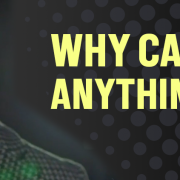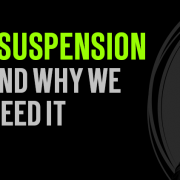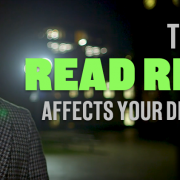Why Can’t I Get Anything Done?
People are working from home, but can’t concentrate. And it’s not the kids or the dog.
The last remnants of an analogue social life have been yanked away. For now at least. Of course, we’ve been replacing face-to-face communications with digital devices for a while now. But no one fully understood the privilege of real-world social encounters, until now.
When the lockdowns first started, many people were secretly pleased. They could get more done, save time for reading, or maybe take an online course. Those jobs where people could work from home were revered – wouldn’t it be great not having to commute!
Yet people are struggling. Our survey of workers new to working from home has discovered a pattern of idleness and inactivity. Why are people struggling to concentrate and get anything done?
There’s a lot of advice out there about avoiding distractions when working from home. The shrill of kids playing and barking dogs makes it difficult to get much done. But it’s not all about distractions. The fog of apathy is usually caused by anxiety. Everyone knows there’s a silent killer out there – but no-one knows how it will end.
According to psychologist Dan Grupe from the University of Wisconsin-Madison: “Uncertainty diminishes how efficiently and effectively we can prepare for the future.” Uncertainty fuels anxiety.
He goes on to say, “Unpredictable threat cues produce anxious risk assessment behaviour that is likely to persist until such uncertainty is resolved”.
Mary, a legal clerk from Brisbane, fits Dr Grupe’s explanation: “I just feel so unfulfilled at the end of the day, always doing less than I had planned. I keep thinking about what might happen.”
Some people are more affected by anxiety than others:
“It’s not just my work – I’m finding it hard to finish watching a movie! Never mind my plans to practice guitar. I’m actually falling behind” says Michael, a marketing assistant from Melbourne.
Anxiety doesn’t always induce apathy. In fact, a moderate amount of anxiety is good for performance. But it’s a ‘U’ shaped curve. Anxiety boosts our alertness up to a point before it begins to erode performance.
The problem starts when anxiety is too high or sustained over long periods. The result is restlessness, irritability, and procrastination. Eventually it leads to poor coping strategies, and messes with people’s ability to control their emotions. Animal researchers have observed strange behaviours when animals suffer sustained anxiety, including bite tendencies and compulsive licking. If you corner a stressed animal, they snap.
Strategies to Get Back Your Concentration
The dominant theory for why anxiety ruins our concentration suggests that anxiety uses up thought capacity by hogging brain resources. Our minds tend to wander to the same thoughts over and over, making it difficult to concentrate.
We can’t remove our uncertainty, but we can try to control our thoughts.
Think comparative thoughts.
People have a natural tendency to focus on the bad, and overestimate how likely a bad thing will happen to them. Thinking positive thoughts helps reduce anxiety, but it’s not easy when you’re constantly reminded of COVID-19 on the news.
One strategy to deal with our tendency to focus on the bad is to put things in perspective. Some people find that watching prison or war documentaries helps blunt the sharpness of their own predicaments. Others make a list of everything that’s good in their lives and compare it with the bad.
According to John Hopkins University data, the recorded mortality rate of COVID-19 in some countries could be over 10%. But remember that on average 90% of people who catch coronavirus survive, which doesn’t sound as bad as the Spanish flu which had a mortality rate of 50%. Making a habit of comparing your thoughts to more extreme circumstances helps you to keep things in perspective.
Staying social.
Humans are social animals, and it seems we’ve been forced into isolation. But we’re not completely blocked from being social. We can converse with others online, or even in pairs when exercising. One strategy that clinical psychologists use to help anxiety sufferers is getting them to express their ideals, values, convictions, identifications, and meanings. Expressing your feelings to others reduces the sting of those thoughts that are troubling you the most.
Use your social time to share your feelings and concerns, and you’ll soon find it easier to put those troubling thoughts aside.
Tackling the easy tasks first.
One of the unusual things about anxiety is that although it can impair your ability to concentrate, it can also improve the performance of habitual tasks that don’t require much thinking.
Divide your day into easy tasks and hard tasks. Get the easy tasks done first, or if you find yourself struggling on the hard tasks switch to the easy tasks. Feeling like you’re getting stuff done gives you a sense of purpose – and feeling a sense of purpose makes you feel more in control, reducing anxiety.
Live Healthy.
It’s a cliché: a healthy body makes a healthy mind. But it also reduces anxiety. There’s a tendency for people in lockdown to drink more alcohol, stay up later, and forgo exercise. But each of these contributes to anxiety, worsening your ability to concentrate. Try to set a healthy routine, and push yourself to get outside each day.
We are our own enemy
Silent threats attack by proxy. Catching COVID-19 will most likely put you off your work for a while. But so will merely thinking about catching it.
In ancient times the purpose of anxiety was to help us deal with predators. Anxiety energised us to fight or run away. But problems like COVID-19 are not something we can easily run away from. A small percentage of the world will unfortunately catch the virus. But many more will suffer from their thoughts.








